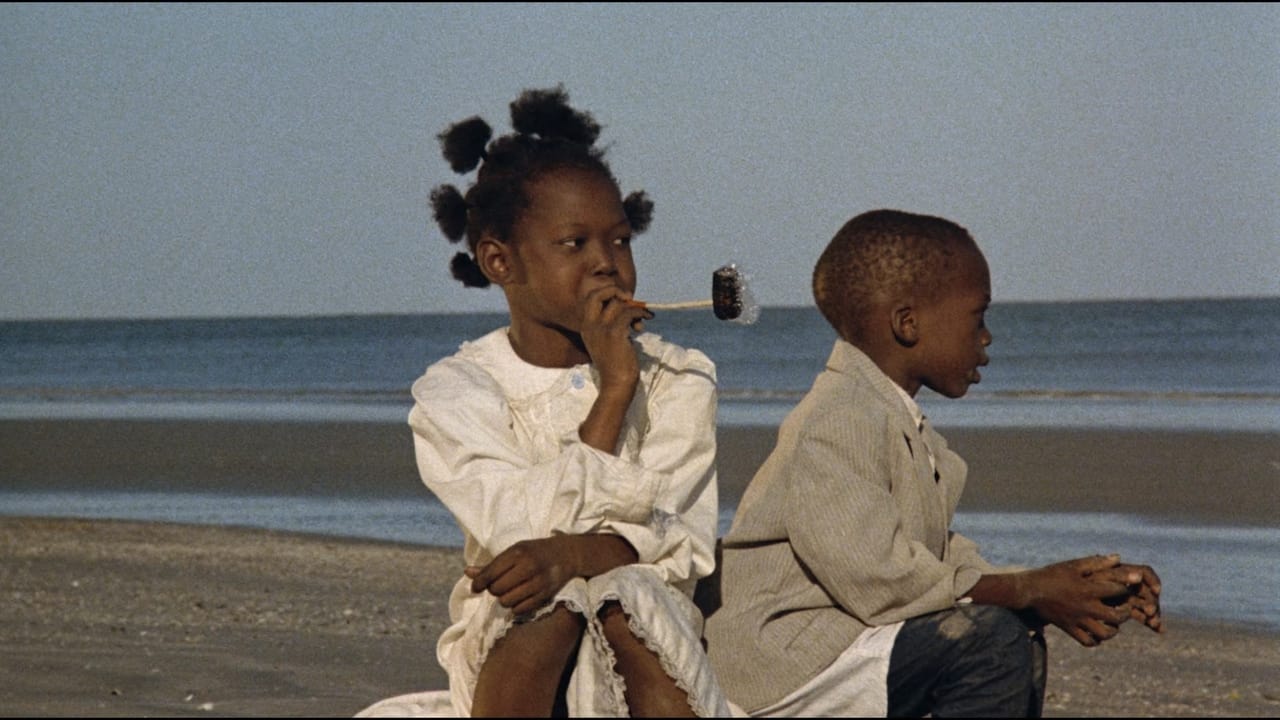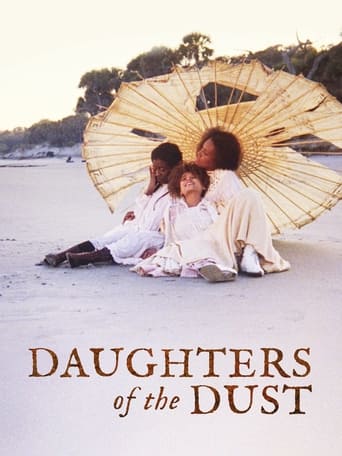Karry
Best movie of this year hands down!
Flyerplesys
Perfectly adorable
MamaGravity
good back-story, and good acting
Majorthebys
Charming and brutal
lasttimeisaw
"This must be the most desolate place on earth." is uttered in this ethnographic trailblazer from Julie Dash, and the said place is Igbo Landing, on St. Simons Island off the Georgia coast, where lives Gullah islanders, an African-American people distinctively preserves its African traditions and origins. The story of DAUGHTERS OF THE DUST takes place in the turn of the 20th century, and pivots around the Peazant Clan when the family is facing an impending separation as most of them decide to pursue a new, modern life northward in the mainland, whereas the elderly matriarch Nana (Cora Lee Day), refuses to leave the island where she is born and raised. Weaving its non-linear narrative with a voice-over of the unborn child (Warren), whose dubious parentage is a scathing testimony of Gullah people's sufferance to the injustice and oppression (although they are not explictly presented here), strewing flashback, spectacular shots of its unique topography, myths (water-walking), rituals (baptism) and supernaturalism (a young girl's ghost or a surreal shot in the graveyard) intermittently along the way, yet, on a less favorable note, its banally synthesized accidental music (save for some tribal rhythm) fails to leaven the narrative as the icing on the cake, often irritatingly takes us away from its spatio-temporal environs. It is a shade daunting for a first-time viewer to suss the whole picture of who is who and their familial relations immediately, but it is rewardingly the women's voices are predominantly heard through a handful of strong characters. Cora Lee Day's Nana, an obstinate heathen refuses to evangelism but cleaves to memories and mementos of the past in her own superstitious mindset, is a stunning exemplar of what energy and impact those underemployed dark-skinned thespians can generate if they are granted a platform, she is electrifying as the old guard battling mortality and being forgotten, subsists a wisp of spiritual tenacity that becomes her lifeline. Barbarao plays Yellow Mary, one of Nana's many granddaughters, the black sheep practicing the oldest profession, returns for the last supper with her same-sex lover Trula (Hoosier), is at loggerheads with Haagar (Moore), Nana's intractable granddaughter-in-law, who aims to sever her family entirely from the backwater, represents the aggressive side of the polarity. Finally, Alva Rogers as Eula, mother of the unborn child and wife of Nana's great grandson Eli (Anderson), staggeringly performs a quasi-possessed plea of understanding and unification in the climax, conjuring up a most theatrical moment in this otherwise self-reflective, desultory essay honoring Gullah culture and underlining the inexorable generational shift and a muted understanding thereof. An oddity disinterred from oblivion, and forever enshrined as the first feature film directed by an African-American woman distributed theatrically in the United States, Dash's ethereal debut enters that year's Sundance and is recognized for its otherworldly cinematography, but its groundbreaking genesis doesn't parlay into a successive big screen career for Dash, who is relegated to small screen works mostly and his second theatrical film FUNNY VALENTINES arrives in 1999, and that's it, does she deserve another chance? For shizzle!
katsii-1
Most of the other comments have described what I loved about the film. It's one of my all-time favorites. I may have had an advantage - having just returned from a year in Jamaica when I first saw the film - the language was understandable to me without the subtitles most of the time. I have to say - I don't understand the folks that didn't get it. This film spoke to something deep inside me...something that perhaps all women share, whatever their background or color. Yes, it deepens ones understanding of a particular time and of a particular culture...but for me it goes way beyond that. I can only say, if you haven't seen it, rent it - decide for yourself. You'll thank me :).
mafernandez
Julie Dash grew up in Long Island, New York and graduated from CCNY right after high school with a degree in film production. Dash moved to L.A. only to be rejected by UCLA's film department, but later accepted as a student of the American Film Institute through a fellowship. Grants then started rolling in and Dash was able to begin writing and shooting films which revolved around true historical portrayals and images of African woman such as depicted in Daughters of the Dust. This film was written, directed and then released by Julie Dash in 1991. The historical context of this film stretches from the time of the slave trade up to the summer of 1902, when the Peazant family left an island off the coast of South Carolina and headed north for the mainland. I would consider this film to be within the genre of modern melodrama because of the overly emotional acting styles, complex plot, long monologues and excellent musical score which seems to parallel the moods in each scene perfectly. I also found the mis en scene, as far as the setting, costume, figure movement and expression and cinematography to be very well done. This is an intense film definitely worth watching.
sevenpoint9
Daughters of the Dust, directed by Julie Dash, is a film about the Gullah people set in the South Carolina Sea Islands around the turn of the century. It centers mostly around the Peazant family women. The family plans to migrate from the Island up to the industrialized North. The eldest of the clan, Nana, insists on staying behind because she fears losing the traditions and customs of the Gullah people. The movie is visually pleasing, but rather hard to follow at times. As characters are introduced to the film, we are never informed as to who exactly they are and what their relation to the group is. Even at the movies end I was confused as to why certain people stayed on the island and others left to migrate. However, the movie was not necessarily intended to tell much of story, rather to portray the feelings and emotions of the Gullah clan. It expresses the importance of traditions and memories of family.

